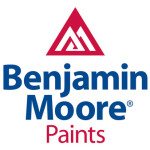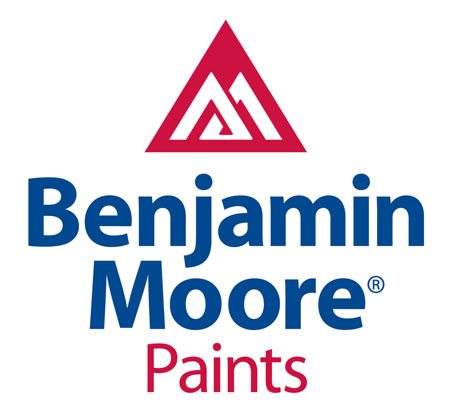
I am pleased to launch the Blogging Painters Open Mike series with a portion of a recent interview I conducted with Dana Autenrieth of Benjamin Moore. Dana works in a leadership role in the Residential Contractor Segment of Benjamin Moore. Therefore, he has an interest in understanding the issues that are on the minds of paint contractors and clarifying misperceptions between contractors and the manufacturer side of the supply chain in our industry.
Benjamin Moore has changed right along with the economy and the paint industry in recent years. They have entered new retail venues and introduced new lines of product, both of these moves have come under fire from contractors and dealers at times. More competition to the traditionally small, independent Benjamin Moore dealers, and what appear to be more lines of pricier paint being put out on the shelves.
Dana informed me that hardware stores currently represent about 35-40% of Benjamin Moore retail outlets, and that there are no lines of paint product that were specifically created for sale in those venues. This is an important point in an era when previously reputable manufacturers have been cheapening product and selling de-spec versions in big box stores. That does not appear to be the case here. According to Autenrieth, all product lines are available to all dealers, and there are no formulation compromises regardless of where a can of paint is shipped to in order to be sold. With that, we cut to one of the larger issues of the day.
Pricing
BP: In 2011, how many price increases did Benjamin Moore put forth?
DA: I believe we had two this year.
BP: By what percentage did Benjamin Moore products increase in price across the board?
DA: Since we line price, we do not implement across the board increases. Overall, I’d say (percentage-wise) increases have varied from the low single to digit to low double digit, depending on the line.
BP: Are the price increases really all about titanium dioxide?
DA: This year, it has been primarily TiO2, but most raw materials have gone up as well.
BP: Can paint manufacturers find alternatives to titanium dioxide?
DA: I think the entire world is now looking for alternatives to TiO2, or at a minimum finding ways to use it more efficiently.
BP: What function does it serve in paint?
DA: TiO2 is the primary hiding agent in paint.
BP: So, let’s take a flagship product like oil based Satin Impervo. What is current retail pricing on it, and can we count on it being around forever as new waterborne platforms gain traction?
DA: MSRP is around $70. Our customers decide the fate of our products with their wallets. As long as there is decent demand for any of our products, we will continue to make them.
BP: What exactly makes Aura a better can of paint then, say, Ben?
DA: This is like asking what makes the 7 series BMW better than the 1 series. With Aura there is just more of everything that makes a can of paint perform better in application and especially in dry film and color performance. When we say it is our best, it really is.
BP: What is the difference between a $19/gal big box store paint and a comparable line of Benjamin Moore paint, and why should the BM line cost more?
DA: My experience shows that most folks, especially painters, buy for value not price. I define price as the monetary price paid while value is the net benefit received after all price and non-price costs are accounted for. So as for what’s in the can that makes it worth more, it’s the same answer as the previous question about Aura vs. Ben. Then you add in non-price costs that we and our retailers eliminate like lack of service, knowledge, sales support and you will find that we are often the better value overall. With paint, like most things in life, you tend to get what you pay for. I cannot think of a single instance in our category where the lowest cost product garners the highest share – the simple reason is that there are too many other non-price tradeoffs involved and frankly, there is always someone out there that makes it cheaper. If most folks were focused on price, not value, most of the brands we know today simply couldn’t exist.
Stay tuned to Blogging Painters for the next Open Mike session, which will drill a little bit deeper into specific Benjamin Moore product questions with Dana Autenrieth. If you have questions on this portion of the interview, please leave them in the comment section below and we will make sure Dana addresses them for you.


Is Bemjamin Moore’s upcoming entry to Canadian Tire, a big box store, going to be with a regular BM line of paint or a custom line made especially for them and does this represent an eventual move to US box stores as well?
It will be a line specifically for Canadian Tire only and has nothing to do with the independent BM retailers. Origins is an entry level product that would be classified as a lower quality grade than Super Spec.
When a can says 400 sq. ft. per gallon, does that mean one coat? I ask this because I usually get 2 coats for that area… what is the official meaning of this label detail?
It means exactly what it says…an 8×10 foot wall would be 80 sqare feet so two coats would be 160. The square footage has nothing to do with number of coats. Take your perimeter and multiply it by the height of the room. That is your square footage for 1 coat of paint. Sometimes a second coat seems to use less paint because you don’t require the same kind of coverage as on a first coat. For durability and proper millimetre thickness, 2 liberal coats is always best practice though.
Great interview Scott.
I am curious about why when I buy Aura at my BM store they say they can not do contractor pricing for Aura and that it is the same price for a contractor or a HO buying a gallon at a time. Is this just something the vendors decide to do or is it a restriction by BM themselves?
I am not complaining as my store is cheaper than others but am curious on why Aura is set up like that at my local store.
Good article Scott.
Hi Sean,
Here is what I can tell you from my conversations with the guys at Benjamin Moore. Benjamin Moore doesn’t control the price of their products within the independent stores. Each store owner determines their own pricing and discounts. Your BM store has obviously decided to discount his product across the board.
My questions are:
1. Why does manufactures products that perform basically the same, have such a large disparity in pricing?
2. Why do other manufacturers offer more aggressive pricing structures to contractors? Or why does Benjamin Moore refuse to offer competitive pricing?
Dana says,
“I define price as the monetary price paid while value is the net benefit received after all price and non-price costs are accounted for.”
This is so true, I value the products and service I get from my paint store, thanks for taking the time to share with us, I look forward to hearing more from Dana!
Thanks! Looking forward to more…..
Dana was gracious enough to respond to some of the questions raised here, please feel free to leave comments with your thoughts and questions and we will follow up!
Click here to see “Response to Price and Value”.